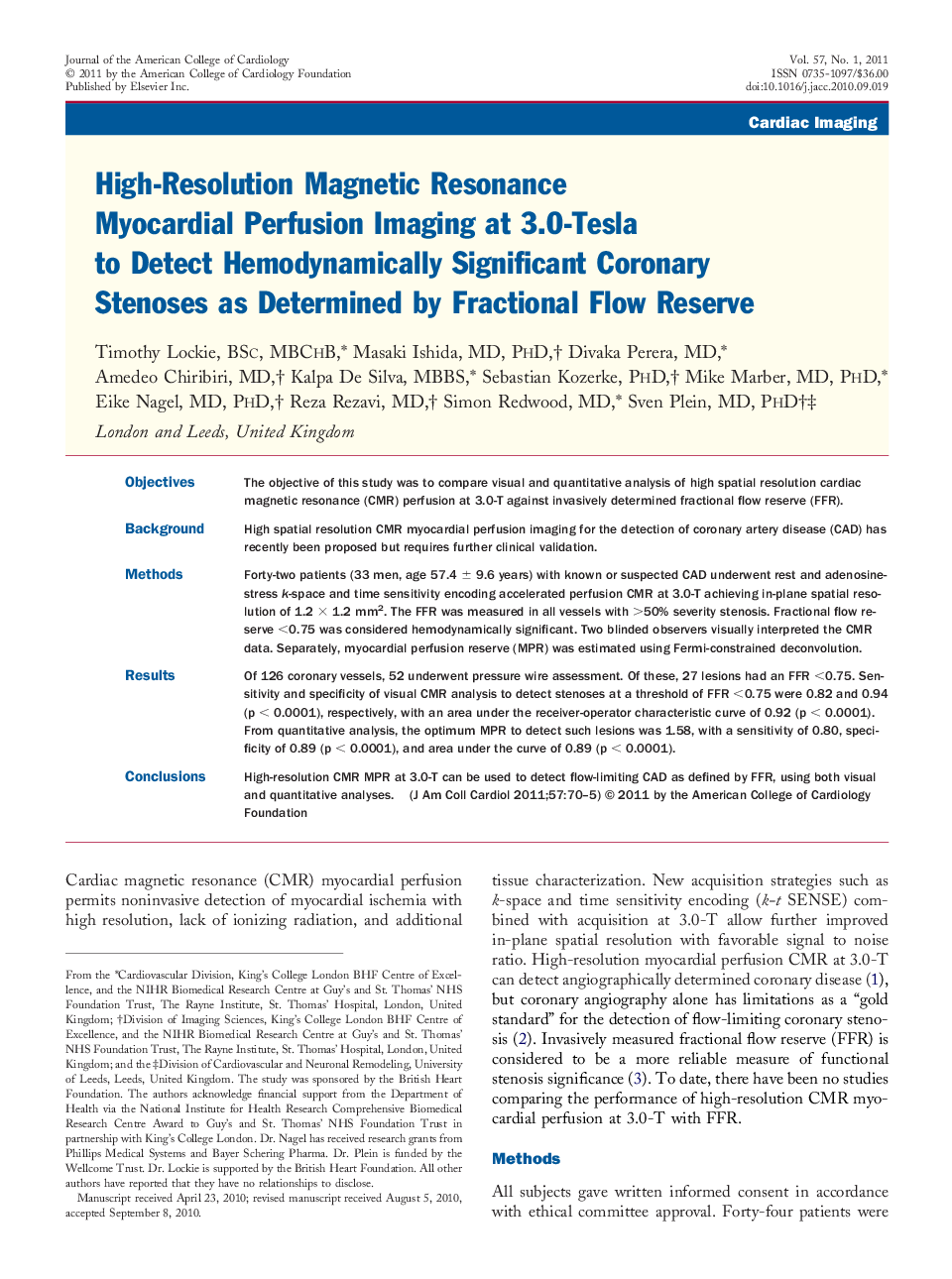| Article ID | Journal | Published Year | Pages | File Type |
|---|---|---|---|---|
| 2950643 | Journal of the American College of Cardiology | 2011 | 6 Pages |
ObjectivesThe objective of this study was to compare visual and quantitative analysis of high spatial resolution cardiac magnetic resonance (CMR) perfusion at 3.0-T against invasively determined fractional flow reserve (FFR).BackgroundHigh spatial resolution CMR myocardial perfusion imaging for the detection of coronary artery disease (CAD) has recently been proposed but requires further clinical validation.MethodsForty-two patients (33 men, age 57.4 ± 9.6 years) with known or suspected CAD underwent rest and adenosine-stress k-space and time sensitivity encoding accelerated perfusion CMR at 3.0-T achieving in-plane spatial resolution of 1.2 × 1.2 mm2. The FFR was measured in all vessels with >50% severity stenosis. Fractional flow reserve <0.75 was considered hemodynamically significant. Two blinded observers visually interpreted the CMR data. Separately, myocardial perfusion reserve (MPR) was estimated using Fermi-constrained deconvolution.ResultsOf 126 coronary vessels, 52 underwent pressure wire assessment. Of these, 27 lesions had an FFR <0.75. Sensitivity and specificity of visual CMR analysis to detect stenoses at a threshold of FFR <0.75 were 0.82 and 0.94 (p < 0.0001), respectively, with an area under the receiver-operator characteristic curve of 0.92 (p < 0.0001). From quantitative analysis, the optimum MPR to detect such lesions was 1.58, with a sensitivity of 0.80, specificity of 0.89 (p < 0.0001), and area under the curve of 0.89 (p < 0.0001).ConclusionsHigh-resolution CMR MPR at 3.0-T can be used to detect flow-limiting CAD as defined by FFR, using both visual and quantitative analyses.
